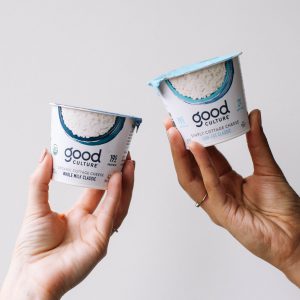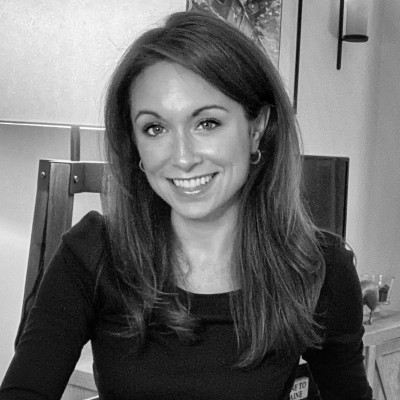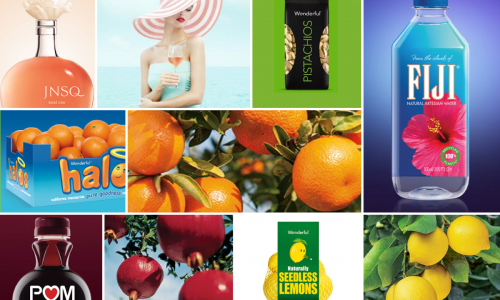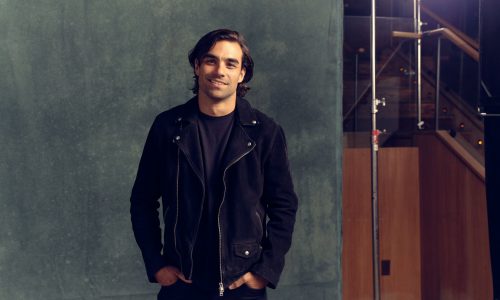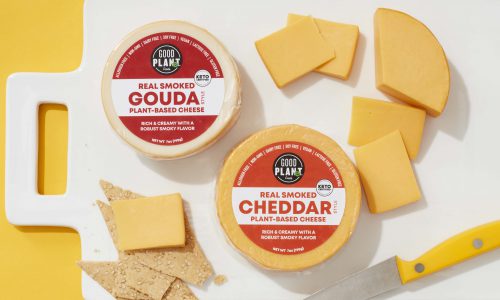How did a formerly overlooked superfood that was once a larger category than yogurt become one of dairy’s biggest disruptors in recent years? Jesse Merrill, the Co-Founder and CEO of Good Culture — a cottage cheese on a mission to make healing real foods available to all — attributes the company’s incredible growth and disruption to its team of passionate people who drive big results.
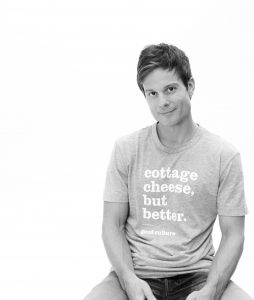 We caught up with Merrill to learn more about Good Culture’s impressive growth; how he sourced a team with “A-players in every seat”; and how he maintains a cohesive, engaged culture among a mostly remote team.
We caught up with Merrill to learn more about Good Culture’s impressive growth; how he sourced a team with “A-players in every seat”; and how he maintains a cohesive, engaged culture among a mostly remote team.
ForceBrands: Tell us first about your background and what inspired you to create Good Culture.
Jesse Merrill: I started my career in event marketing and was hired by the musician Moby to lead the marketing charge for Teany, his bottled tea company. We grew the brand swiftly and sold it less than two years later. I then joined Honest Tea as Head of Marketing when they were still a sub-$10 million brand. We grew the brand to $70M in less than five years and sold to Coca-Cola in 2011. Following the sale to Coke, I joined Anders Eisner (son of Michael Eisner) at ACTIVATE drinks as Head of Marketing. We sold ACTIVATE three years later. At this point, Anders and I decided to join forces for our next venture, Good Culture.
Anders and I saw a major disruption opportunity in the cottage cheese space. Cottage cheese was an overlooked superfood with more protein and less sugar than yogurt, but it lacked relevant innovation and brand appeal. All of the products on shelf were loaded with additives, sourced their milk from confined animals, and mostly came in large outdated tubs with little to no flavor options. We saw an opportunity to bring life back to the very sleepy $1.1 billion category that was once larger than yogurt in the 1970s.
On a personal note, during this time I was also diagnosed with ulcerative colitis (UC), a “chronic” inflammatory bowel disease. I was told that I would have to live on harsh drugs for life to help keep my symptoms at bay and that the disease was incurable. I asked my doctor if modifying my diet could have an impact. He said, “No, there is no correlation to diet.” I immediately dismissed this, met with an integrative doctor, and committed to a three-year diet where I ate nothing but real foods that helped to reduce inflammation in the body. Cultured dairy superfoods (mostly Good Culture cottage cheese) were a major part of this protocol. Within two months of living on this diet, all of my symptoms went away without taking drugs. My last colonoscopy showed no sign of UC. It was as if I never had the disease. That said, I’m a big believer in food as medicine. Our mission is to make healing real foods available to the masses (without hurting our planet or our animals). This idea guides every decision we make.
FB: What makes Good Culture unique? What sets it apart from other cottage cheeses on the market?
JM: Good Culture only sources milk from pasture-raised animals that live on small sustainable family farms; we only use real food, simple ingredients (we never use gums, preservatives, stabilizers, etc.); our product is thick and creamy versus soupy and slimy, as a result of only using real food ingredients versus fillers; our product is naturally higher in quality protein (we never use protein concentrates), and we only use Celtic sea salt as opposed to highly processed common salt. Good Culture is available in both multi-serve and single-serve on-the-go cups. We also offer several different flavor varieties in our single-serve options.
FB: When was your ‘aha’ moment when you realized you were onto something big?
JM: When we launched into key retailers all over the country and quickly saw velocity levels that outpaced category leaders. We also learned that 62 percent of our shoppers were younger consumer segments that weren’t shopping the category before, so we were bringing in new users and growing the size of the pie.
FB: What are some of the proudest moments of your growth as a company?
JM: We have grown more than 500 percent since our first full year in 2016 and have doubled revenue for the past two years. We are looking to double again this year. The consumer response has been amazing — our repeat is very high, and we are building a loyal following. One of the most frequent comments we hear from consumers is how they were not cottage cheese fans before but now eat Good Culture daily, so we are growing and elevating the category while introducing people to nutrient-dense real food products that heal. I’m also immensely proud of the team that we have built. We have developed a very special organization of passionate people who fight hard every day to further our mission.
FB: Let’s chat team building, because as we like to say at ForceBrands, we build the teams that build the brands. Who were your first key hires and how did you source them?
JM: We immediately hired a VP of Operations and VP of Sales to help jump-start the business. Both roles are critical to a successful launch. Our VP of Sales was sourced via personal networks and our VP of Operations was sourced via ForceBrands!
FB: You mentioned that most of your team works remotely. How did you manage to build a dedicated remote team?
JM: We initially tried to build a local team that all worked out of our office in Orange County; however, sourcing A-players was very challenging with that approach. We quickly realized that we’d be more effective if we built a virtual model that would allow us to fill every seat in the bus with top-notch talent. Though most of the team works remotely, we are all incredibly close. This is achieved by an overcommitment to open communication, transparency, and vulnerability throughout the organization. Ensuring that all employees are fully living our core values and climbing to the top of the same mountain is paramount. Technology also plays a critical role and enables communication that flows seamlessly. We are constantly evolving and optimizing our toolbox to create a powerful model. Currently, we are using a mix of email, Slack, Zoom, and Dropbox — the combination works quite well.
FB: What are some tips for maintaining a cohesive culture when most of your team is remote?
JM: Make sure to connect with your team on an emotional and meaningful level — no time for superficial moments; ensure everybody knows, lives, and breathes your core values; make technology your best friend, and plan strategic get-togethers that allow for in-person connections and team building.
FB: What was your decision process behind building a mostly remote team? And what are some pros and cons you’ve encountered leading a team that’s not always on-site?
JM: It was simple; we wanted A-players in every seat. Moving to a virtual model allowed us to do that quickly. The biggest pro is the ability to find the best talent without the friction and limitations that go along with a local search.
The biggest con [of having a mostly remote team] is the more limited face time that the team gets with each other; however, you can overcome this with the right mix of technology, open communication, and authentic connections.
FB: What excites you the most about your brand and its journey?
JM: Building an organization of passionate people who care about making a positive impact on the world through the democratization of responsibly sourced healing real foods is very rewarding. We have experienced swift growth, but we have a long way to go to create a positive material impact on the food system. We will thoroughly enjoy every step of the journey and won’t stop charging.
FB: What’s next for Good Culture? Any exciting new innovations or partnerships you could share with us?
JM: We are focused on becoming a platform brand that continues to drive disruptive innovation across adjacent cultured dairy categories (we just launched a sour cream product and have some top-secret products launching later this year and early 2020) and cultured food more broadly. We are certainly more than a cottage cheese brand and look forward to putting out more nutrient-dense foods that heal.
Interested in working at an innovative food company like Good Culture? Explore our FoodForce division.
